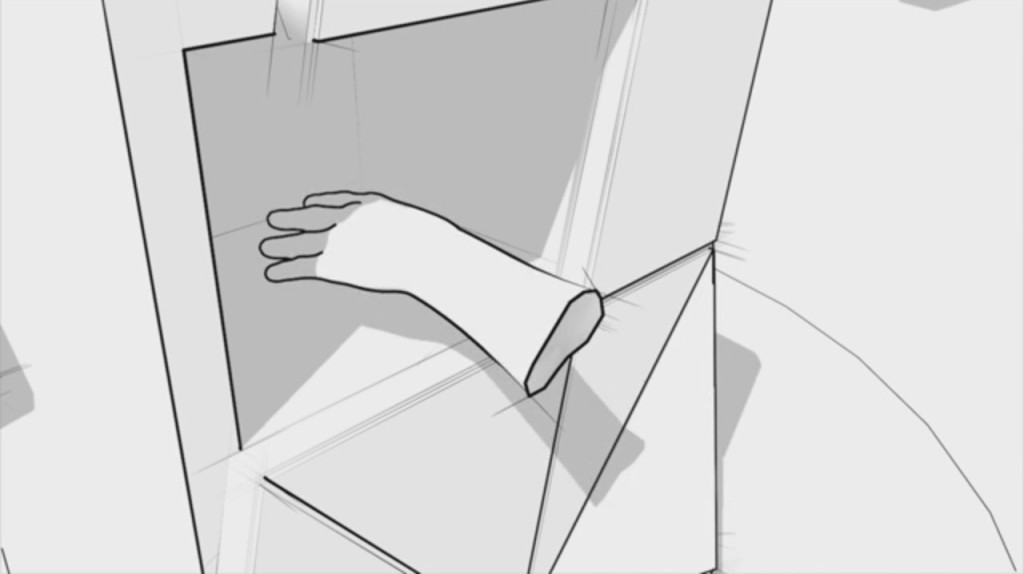The Art and Technology major at Saxion University of Applied Sciences delivers the type of curriculum many of us at Leap Motion would have killed to enroll in as undergrads – four years of learning how to meld mixed media with emerging tech in ways that will spring humanity forward, induce awe, and spiral our collective consciousness into new frontiers. It’s a maker’s paradise.
Recently, six sophomores who’d been itching to incorporate Leap Motion technology into their work since launch came together over the course of ten weeks to create Magic Canvas. Based in the Dutch city of Enschede, it’s an interactive art installation rallying to prevent the once heavily gentrified De Heurne retail district from becoming a veritable ghost town.You can see it in action from now until Thursday.
“Buildings are empty in De Heurne due to e-commerce,” says team PR lead and assistant developer Tim Van Scherpenzeel. “What is a city without its shops? Is it just an empty shell? Implementing art in public space will get people together to think about these things, and create subcultures of their own.”
The concept is simple – an eye-catching LED-outfitted pillar outside a local storefront to glint suggestively at passersby who might otherwise plow right by without giving the shop a second glance. The user is guided to place their hands over the pillar and is instantly able to manipulate different particle systems in the air. These pixel shifters are projected on a half-sphere, then sent into another monitor inside the shop and displayed on a large canvas. The user must enter the shop to fully admire and 3D print their creation.
In this video, the team talks about their design process in creating Magic Canvas:
Wenbo Lu, a lead developer on the project, describes Magic Canvas as “Glitch Art” – part of a genre that trumpets the unexpected and erratic grace of computational error. Bugs made beautiful. It takes the traditional Navajo practice of purposeful imperfections and subverts it for the Era of Open Source.
Seeking a new scripting language to tackle, Wenbo and Tim built the piece in Processing II, leaning heavily into the prolific OpenProcessing community to sharpen their code. Under the direction of Andreas Twardzik, the pair worked closely with designer Jurre Spiegelenberg and UX specialist Tijmen Lindemulder to hone user interaction with a Leap Motion Controller and an Arduino board.
“Leap Motion technology is focused on fingers, so it allows us to get precise control over what users are doing.” Tim explains, “We used Leap Motion to track the exact finger position and remap the value we get from that onto the Magic Canvas.” Unlike similar installations, where the device is mounted on a podium, this outdoor retail installation houses the device inside a special “hand cabin.”

While Magic Canvas has inspired Tim to dig deeper into philosophy, aiming to bridge theory and criticism into future interactive installations he creates, art director Philipp Trübiger wants to use his experience to send contemporary advertising tactics into a tailspin. Wenbo, on the other hand, looks forward to dreaming up new ways to apply coding and UI design to her architecture minor. We’re excited to see where this international crew of creatives will go next. In the meantime, if you’re in the neighborhood, drop by De Heurne 16A and check it out!

[…] Canvas is a retail art installation that lets people reach into a closed space to create art. Because the inner material of the box […]
July 8, 2014 at 7:48 am[…] addition to that we got featured on the official Leap Motion Blog. In an article called Could Public Art Revitalize a Retail Ghost Town? they explain our concept and invite people to visit the exhibition. What more could one ask […]
July 8, 2014 at 12:39 pm[…] this project. San Francisco based Leap Motion published a very detailed article on their official blog. Local news station RTVOost had a short segment in their evening program and online magazine Sax […]
July 9, 2014 at 1:13 pm[…] coding. We’ve seen hundreds of Leap Motion experiments using Processing, from Arduino hacks to outdoor art installations, and the list grows every […]
June 27, 2015 at 6:24 am